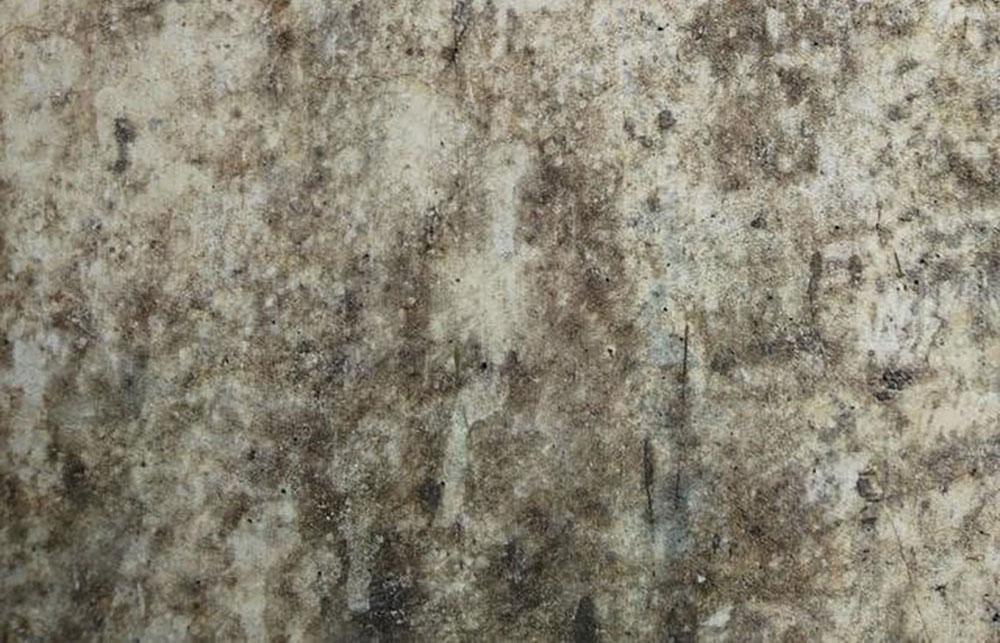Each person reacts differently when exposed to mold spores. Anyone suffering from specific respiratory issues like asthma, severe allergies, or those with immune suppression will experience more challenges from the mycotoxins of black mold than someone of average health.
While there is no official designation as a “danger,” it is not something you should allow to linger in the home for any specific length of time. It is better removed sooner rather than later.
In doing so, the homeowner should contact a reputable Cleveland mold removal specialist skilled to do the job correctly and thoroughly. That way, you can be sure it does not recur, and that the inspector looks at every nook and cranny.
What’s the Story on Black Mold?
Black mold has a reputation that follows it, denoting it as a “silent killer,” creating exceptional danger in water-damaged homes. The greenish-black spots primarily draw towards damp areas, so it thrives in dwellings once flooded or with neglected leaks or any type of water damage happening in a house. It is most prevalent on dry-walled surfaces or fiber or gypsum boards.
Claims suggest the fungus is not the threat that so many attaches to it as in the “toxic syndromes.” These note as evidence of merely media backlash and resultant “mass hysteria.” That does not mean you won’t have symptoms from the fungus. You could very well have a respiratory response or an allergic reaction due to an underlying condition that needs addressing as soon as you notice the symptoms.
According to the “CDC” (“Center for Disease Control”), these spores have the potential to create flu or cold-like symptoms like irritation of the eyes or skin, congestion, or wheezing. With extended exposure, you can develop more intense symptoms, including nausea, a fever, and potentially breath shortness. While it is unlikely to react fatally, you can become ill-meaning the sooner the removal specialists take the spores out, the less likely for health risk.
Black Mold Makes Itself at Home
Making its way inside the home can happen in numerous ways. Mold spores can attach themselves through the air onto pet fur, clothing, bags with you carrying them into the house. However, they will not find it a satisfying environment if they do not find an adequate water supply. That is why in most cases, you will find the fungus in water-damaged structures that have succumbed to floods or plumbing problems that were left unresolved.
A colony will make itself at home in saturated dry-wall, gypsum board, even carpeting, and it can happen in as little as 24 hours from the time of the event. As soon as you gain access to the home, it’s critical to have the soaked materials removed before the spores develop because they spread quickly and get out of hand fast.
Before you attempt water restoration processes, it is wise to have a mold remediation team come in to inspect for potential development. That all needs to be taken care of simultaneously with the water damage cleanup. The first step is drying out the house and removing what is there instantly by a professional team.
Black Mold Remediation
Homeowners have the option of cleaning out black mold on their own in a DIY effort. But it’s not advisable, particularly with the potential health risk. Professional mold remediation specialists know where the spores hide, have the tools to do the removal adequately and thoroughly so that it does not recur, and have knowledge on cleaning the area so you can come back into a safe, healthy atmosphere.
It is essential to make sure the specialists have an appropriate license with authoritative institutions like “Inspection Cleaning and Restoration Institute” plus insurance. These experts should handle any household issue above 10 square feet.
Anything under that, homeowners have the option of cleaning themselves with the use of bleach and water. The suggestion is to use a combination of scrubbing and adequate ventilation during the process with protective gear in place, including a face mask. Learn about removal at https://www.familyhandyman.com/project/how-to-remove-mold/.
If you or any member of your family has even a slight immune or respiratory problem, it is unwise to tackle any level of mold in the home, no matter how small of an area. It can significantly trigger these sensitivities, sending you to a medical provider for assistance. It is better to allow the professionals to handle any fungus in these situations.
Engage in Regular Home Maintenance and Upkeep
Natural disasters happen when we least expect them with no warning and no means to prepare. If you live in a flood zone and have any notice of a storm, heed the instructions to avoid potential water damages and resultant mold in your home.
As a homeowner, standard maintenance and upkeep is a part of that role. Water “detectors” can help you maintain the plumbing system to catch leaks before they turn into floods and substantial damages to the structure.
Also, aside from engaging in homeowner’s maintenance, regular service inspections from a plumber will ensure everything is as it should be – functional and without defects.
If you are noticing any of the symptoms listed here consistent with mold exposure but have no water in the house, it might have caught a ride into the house another way. Call a specialist to come in and inspect the home to find where it is hiding. They know what to look for, have the tools and the expertise.
Final Thought
Black mold scares people because it was given a reputation based on opinion, mainly from the media. The facts are that it can create more issues for people at risk with respiratory and immune illnesses and cause people of average health to feel like they have a cold or flu.
It is not a fatal fungus. It is something that you want away from your family, out of your house, and removed by professionals – sooner would be better than later. Open this page for ideas on naturally killing the fungus.
